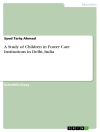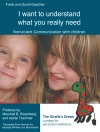This book represents the outcome of the joint activities of a group of scholars who were concerned about the lack of international research in play for children from birth to 3 years. The authors are members of the Organisation Mondiale pour ` l’Education Prescholaire ´ (OMEP). For further information, see http://www.om- ong.net/. The idea of carrying out a research project internationally was born at the OMEP’s World Congress in Melbourne, Australia 2004. All member countries were invited and 10 countries decided to participate, of which three have withdrawn d- ing the process. The reason for this might be that in these countries only one person was working with the project, while other seven countries have been working in a team of two or more persons. The countries that have carried out research and contributed to this book with a chapter each are Australia, Chile, China, Japan, New Zealand, Sweden and USA (Wisconsin). For more information about the p- ticipating countries and their corresponding addresses, see Appendix I. This book project started in Melbourne with a discussion about what is general in early childhood education globally, and what is culturally speci c. The discussion was inspired by one of the keynote speakers, Nazhat Shameem (2004), judge in the supreme court in Fiji, when she said: “If we all think we are so different and speci c in each culture, the role of human rights has no value anymore.” We formulated three questions:
Cuprins
A Cultural-Historical Perspective on Play: Play as a Leading Activity Across Cultural Communities.- Play and Learning in Aotearoa New Zealand Early Childhood Education.- Play and Learning in Australia.- Play and Learning in Chile.- “Eduplay”: Beliefs and Practices Related to Play and Learning in Chinese Kindergartens.- The Meaning of Play and Learning for 0–3-Year-Old Children in Japan.- Play and Learning in Swedish Early Childhood Education.- Play and Learning in Wisconsin.- Commonalities and Distinctions Across Countries.












